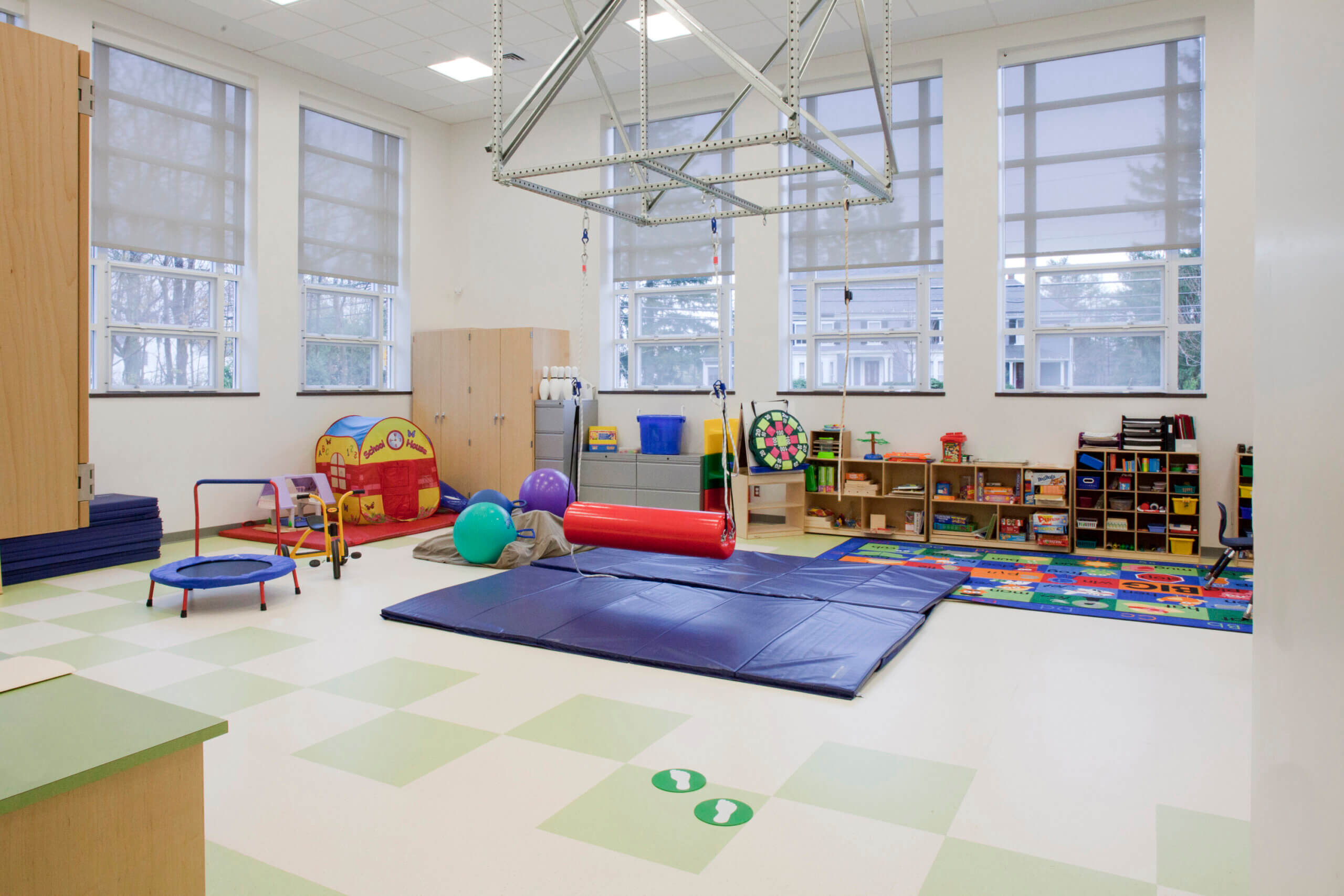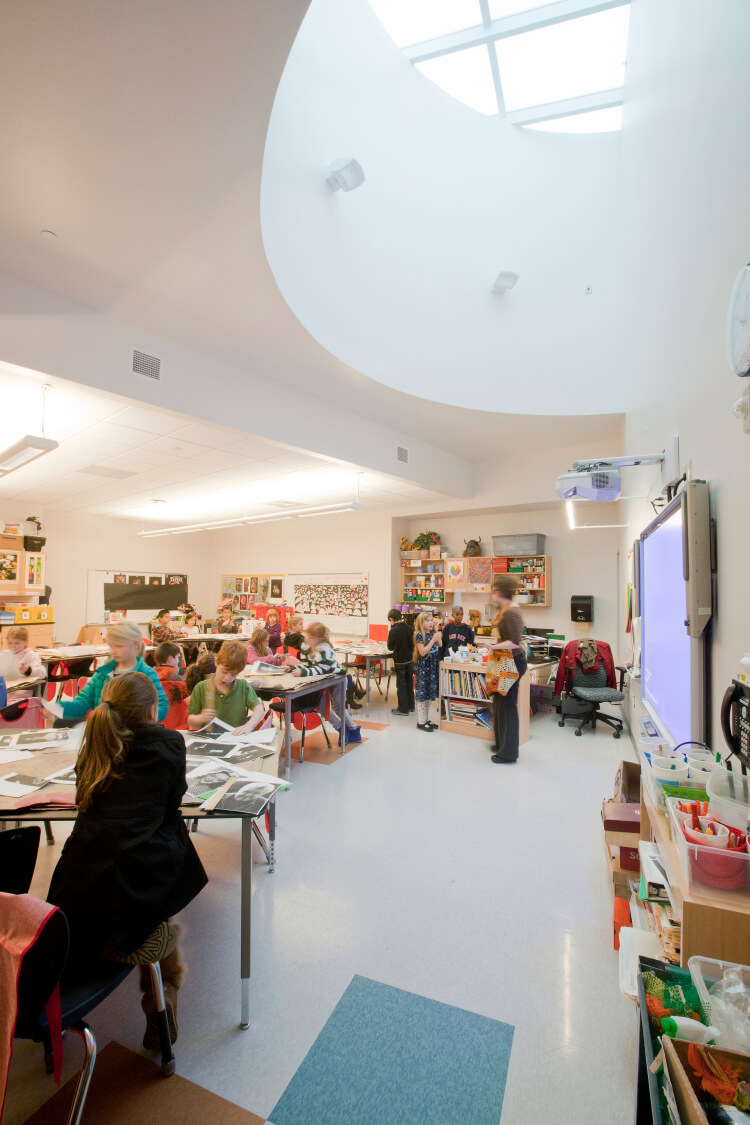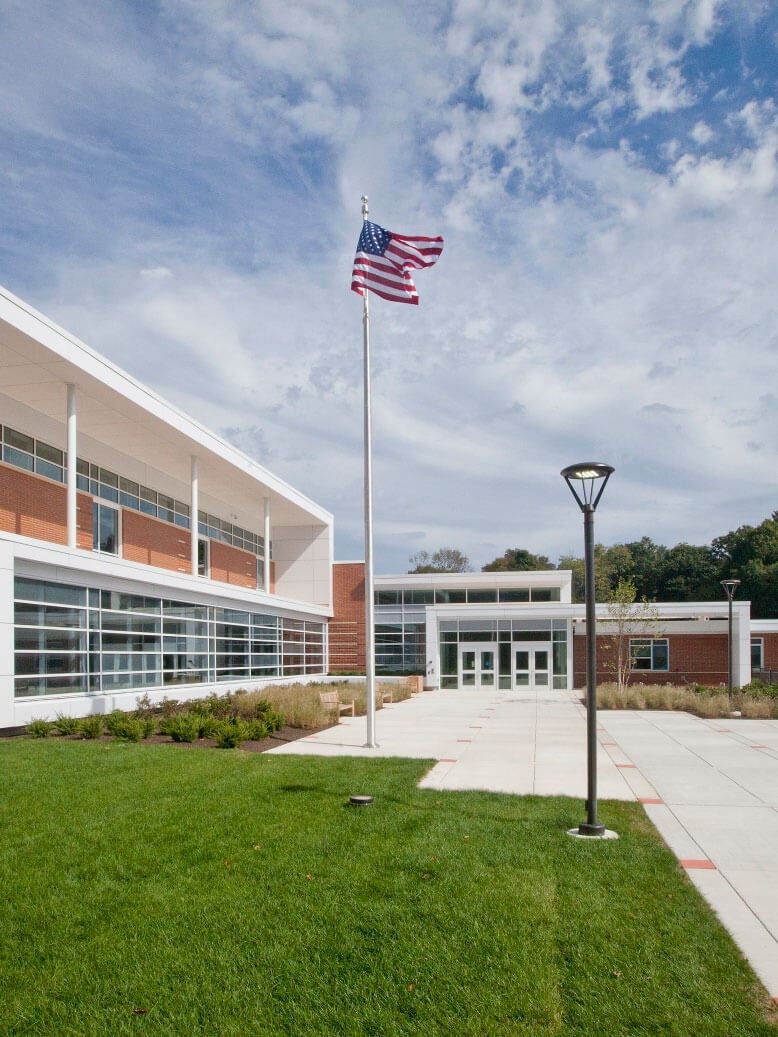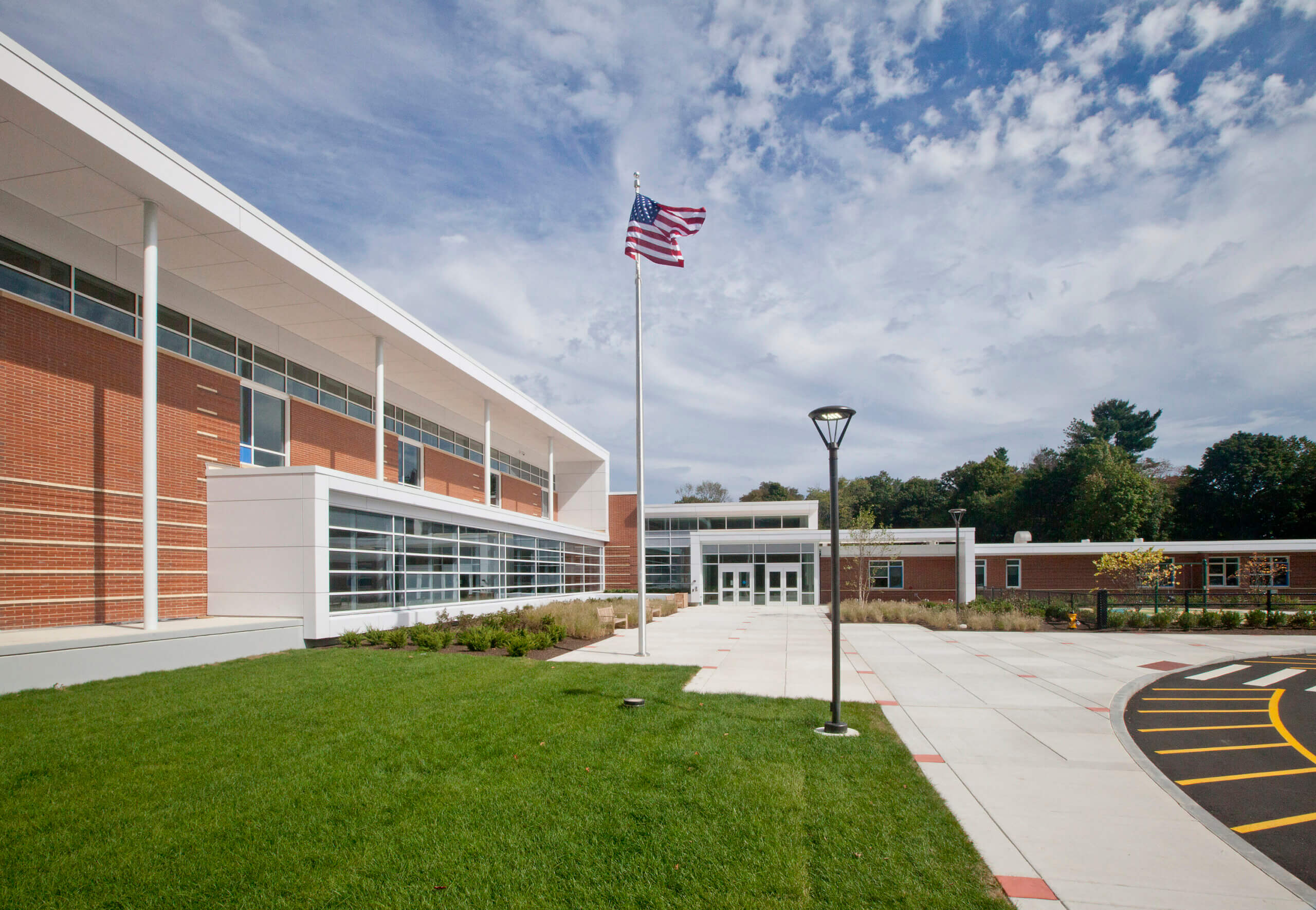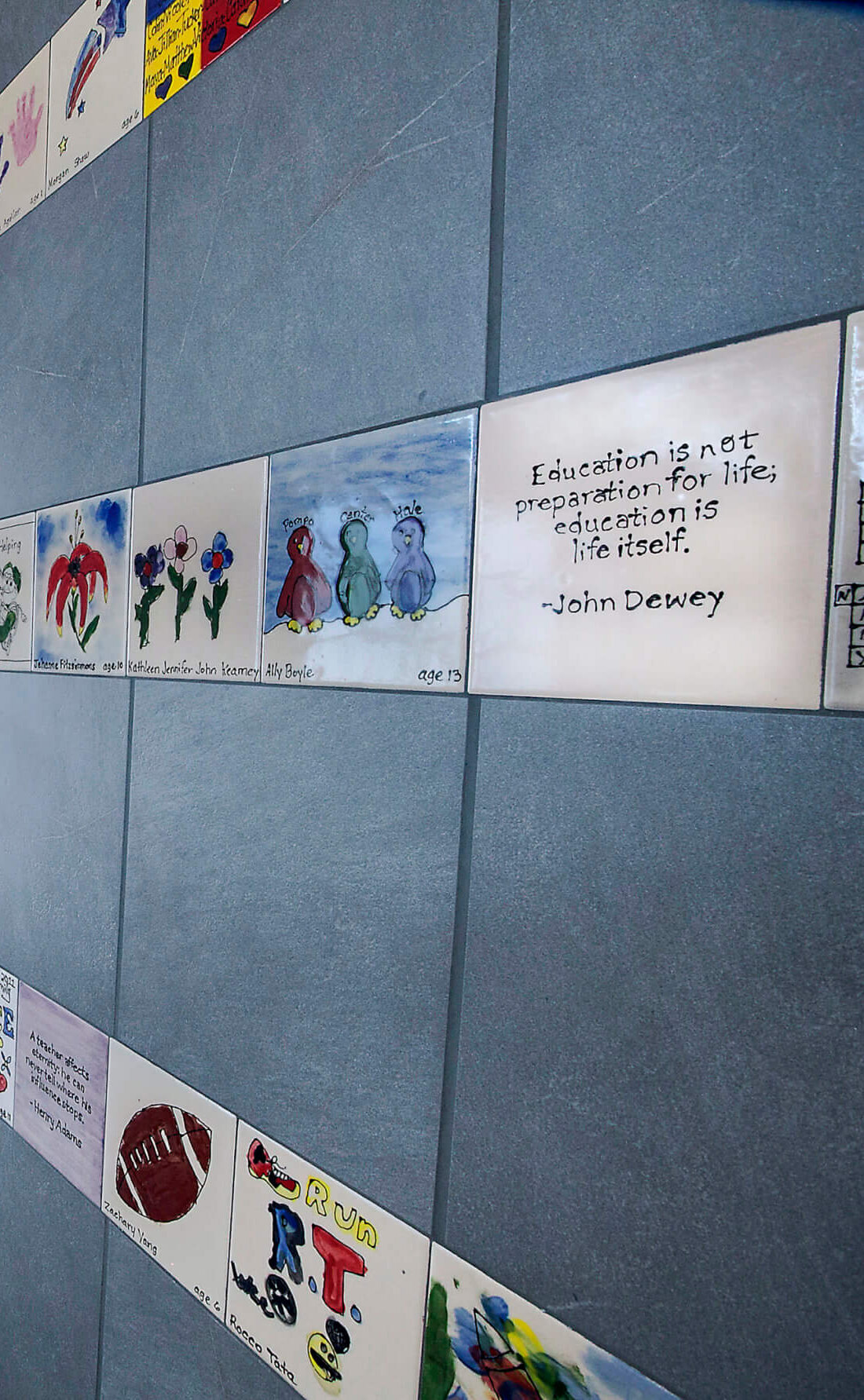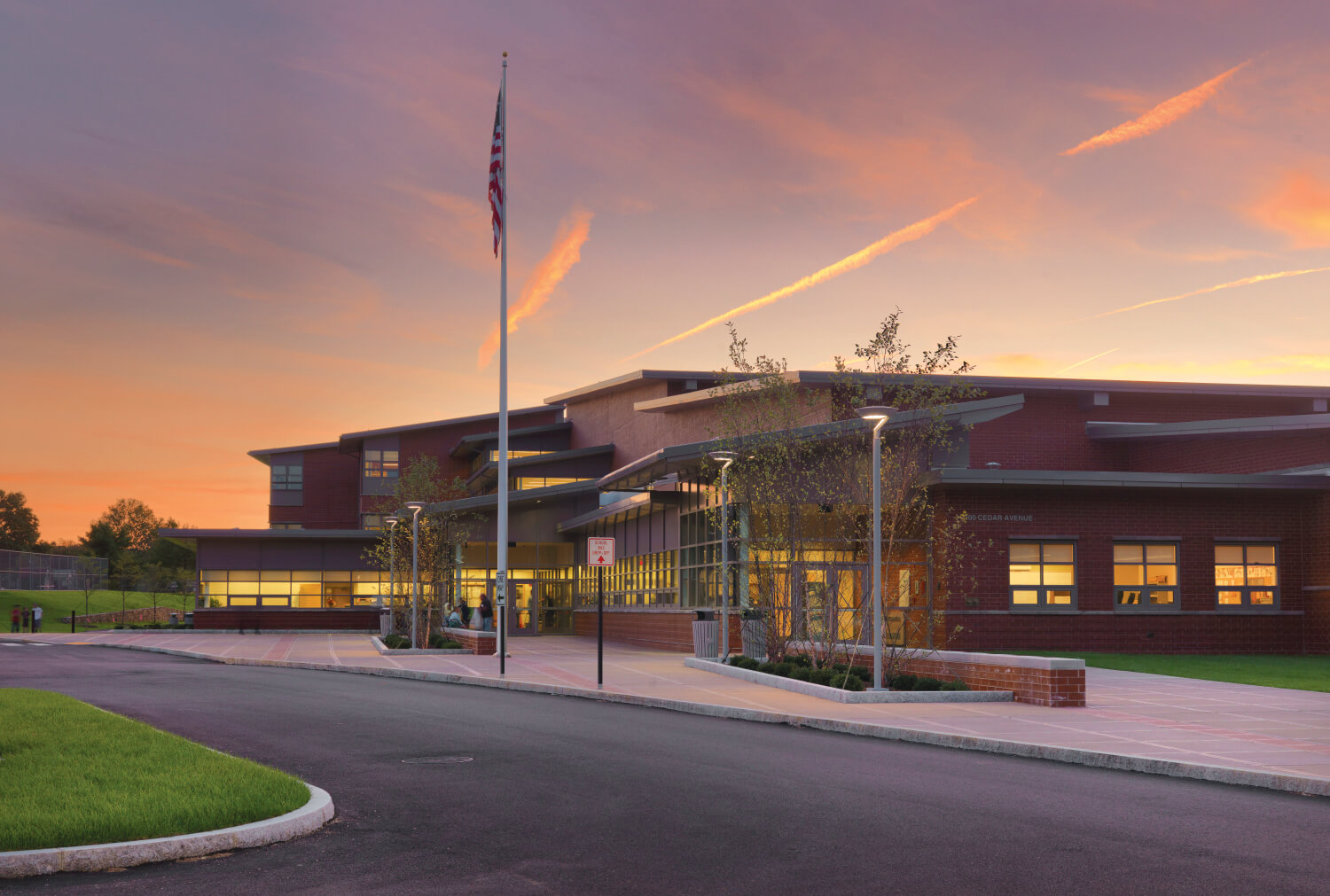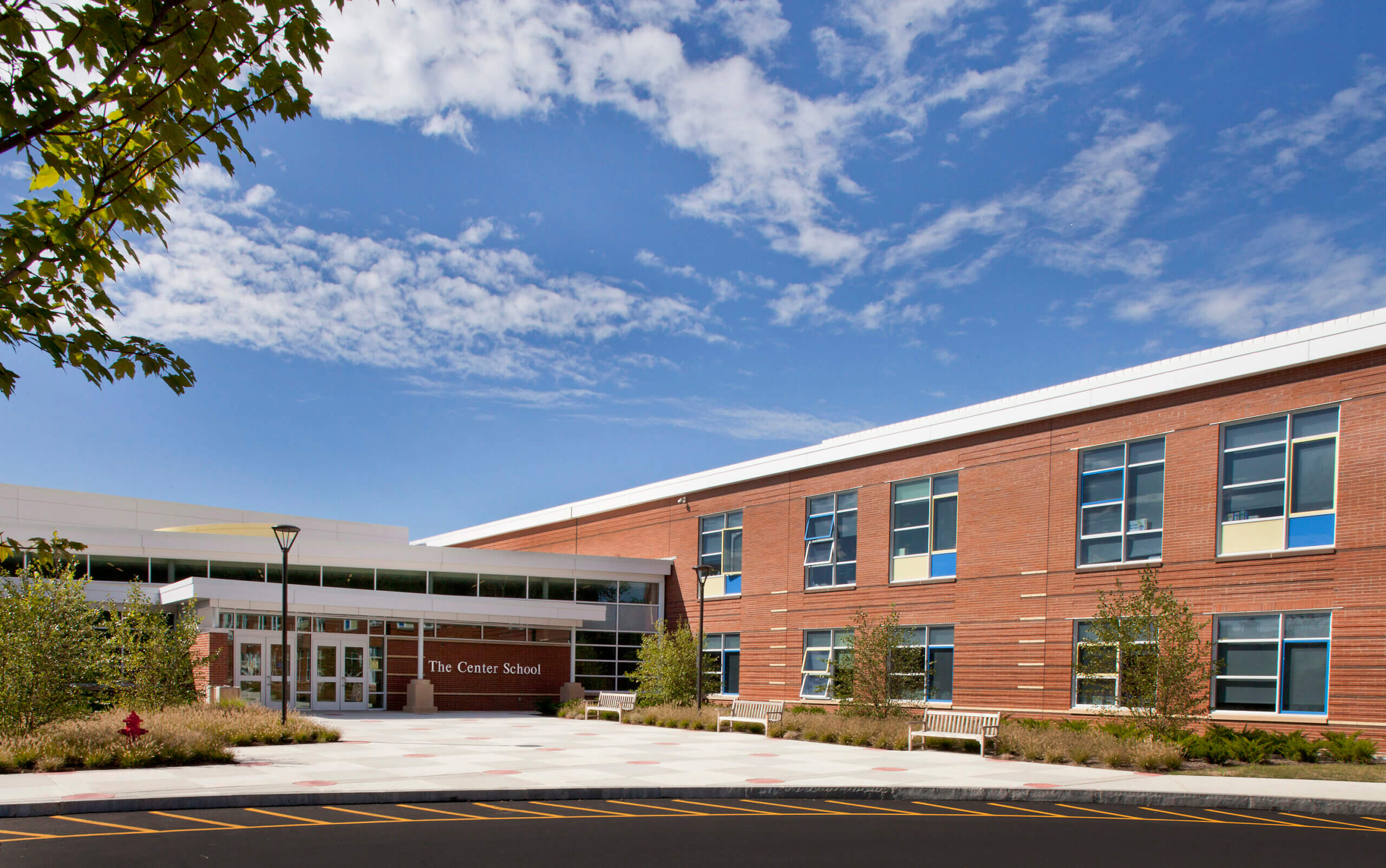
After years of debate and several delays, SMMA’s comprehensive renovation and new construction at Stow’s beloved Center School building brought the community together in celebration of the project.
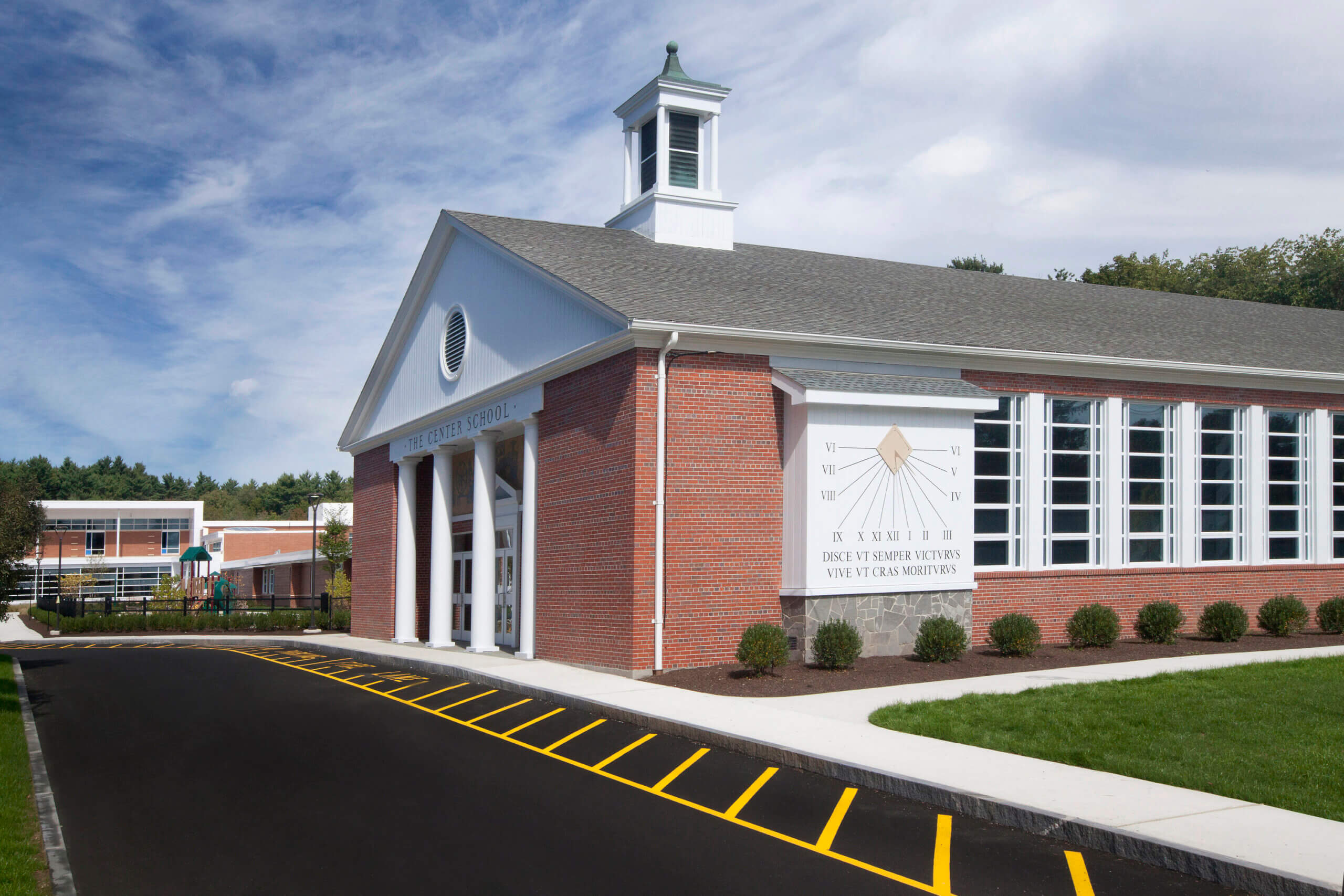
The original Pompositticut School had six classrooms on the exterior walls, and limited natural light filtered into the inner core of the open-plan school. The main bar of the original Center School housed very small classrooms with small windows, and its Great Hall housed the gymnasium, which tripled in use as cafeteria and auditorium.
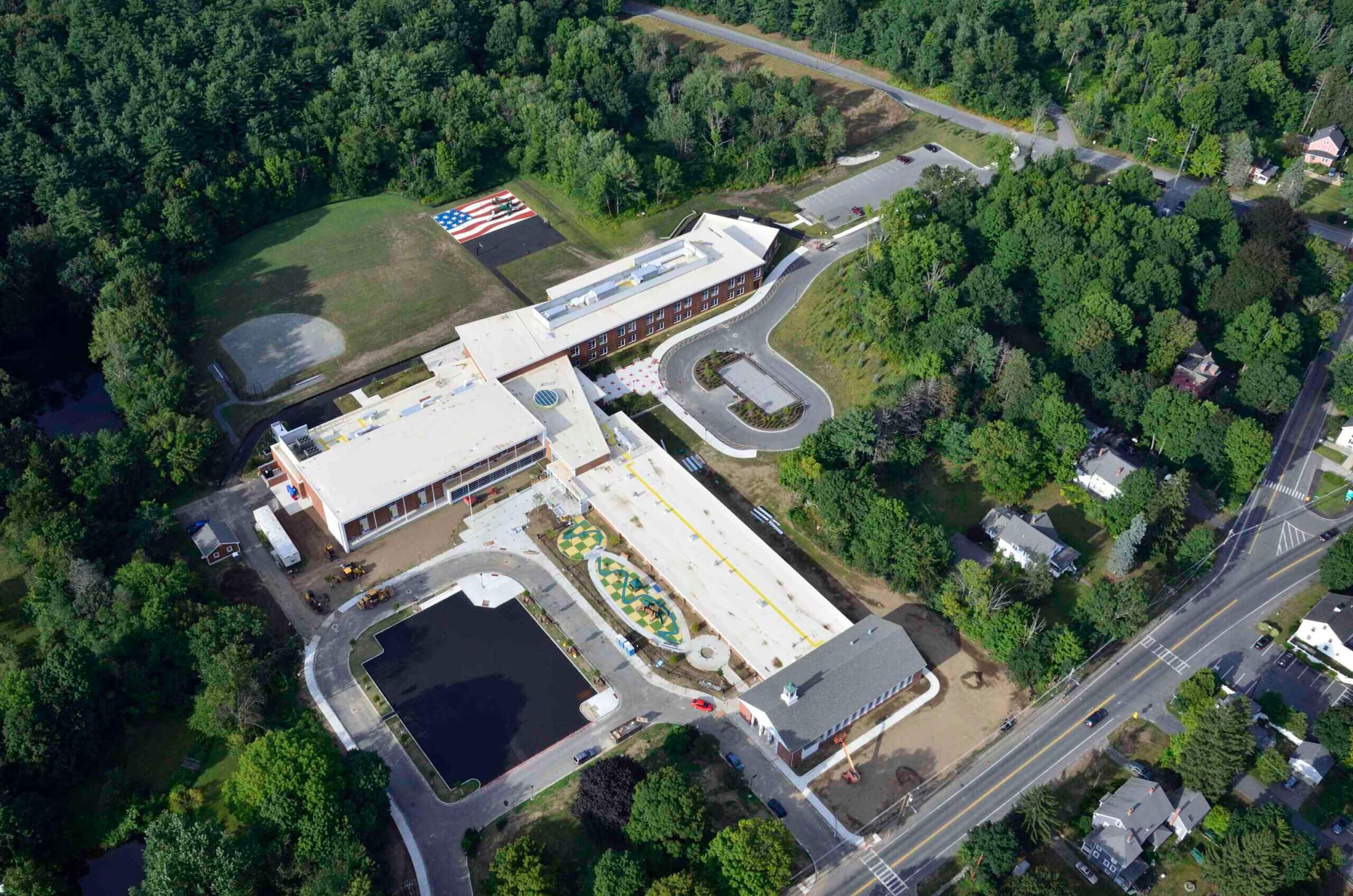
The new Center School’s “T” shape breaks the facility into wings.
An early childhood wing, an elementary wing, and a public wing are joined at the T with administration, art, and media center spaces. Taking advantage of the lower-height original wing for early childhood classrooms, the volume of the school’s Great Hall was reinvented for music classrooms.
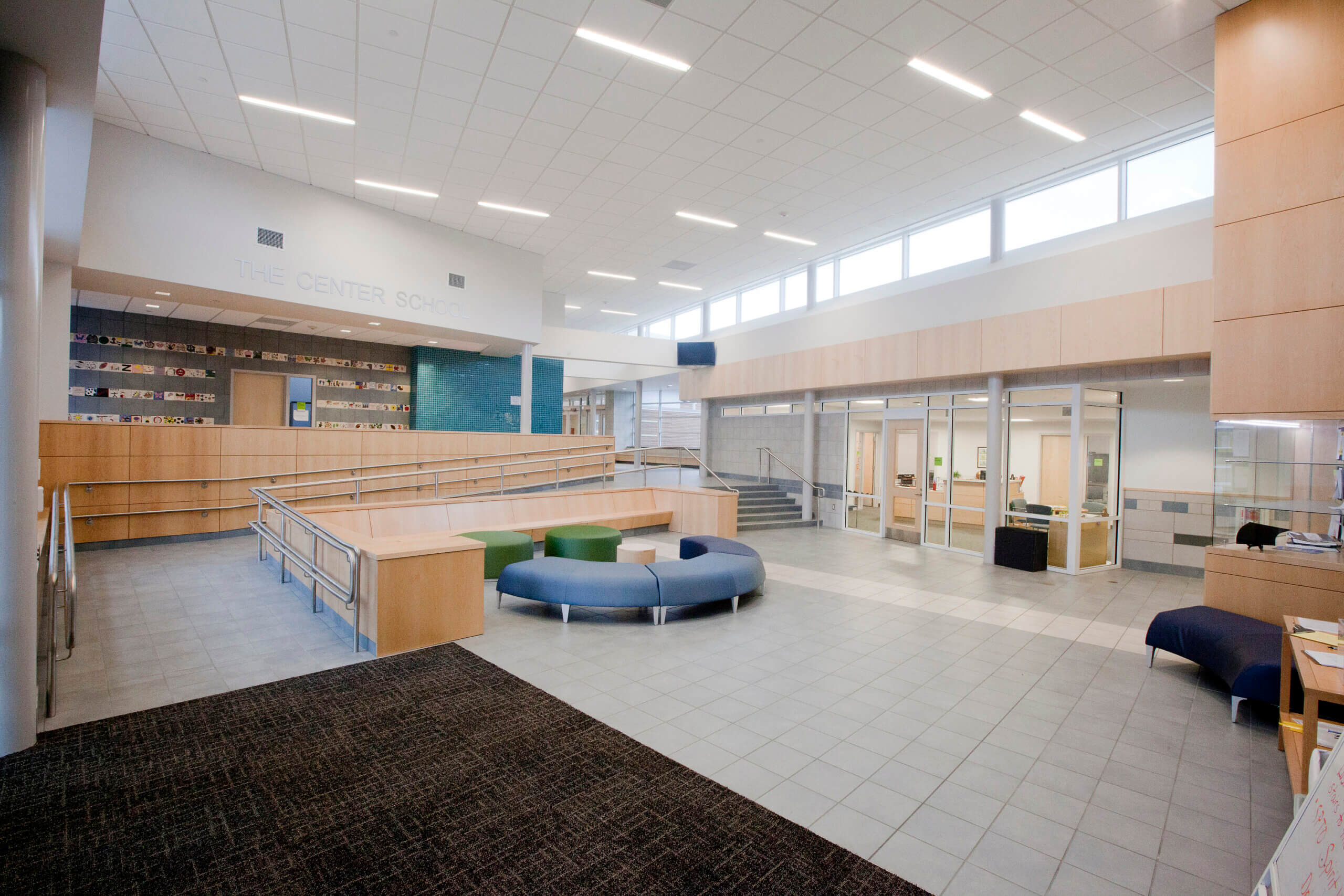
The bright and welcoming lobby is a nexus for circulation.
Often used as a place for informal student and parent gathering, the lobby welcomes visitors for public events and offers a comfortable living room that visually connects the cafetorium, library, and arts spaces.
Community Environment & Planning Process
|The project saw numerous community meetings and design charrettes, including ones focusing on sustainability. These event, many of which were televised, involved teachers, community members, parents, and students.
Every teacher and staff member, as well as several students, met with the project’s educational planner during the multiple design phases.
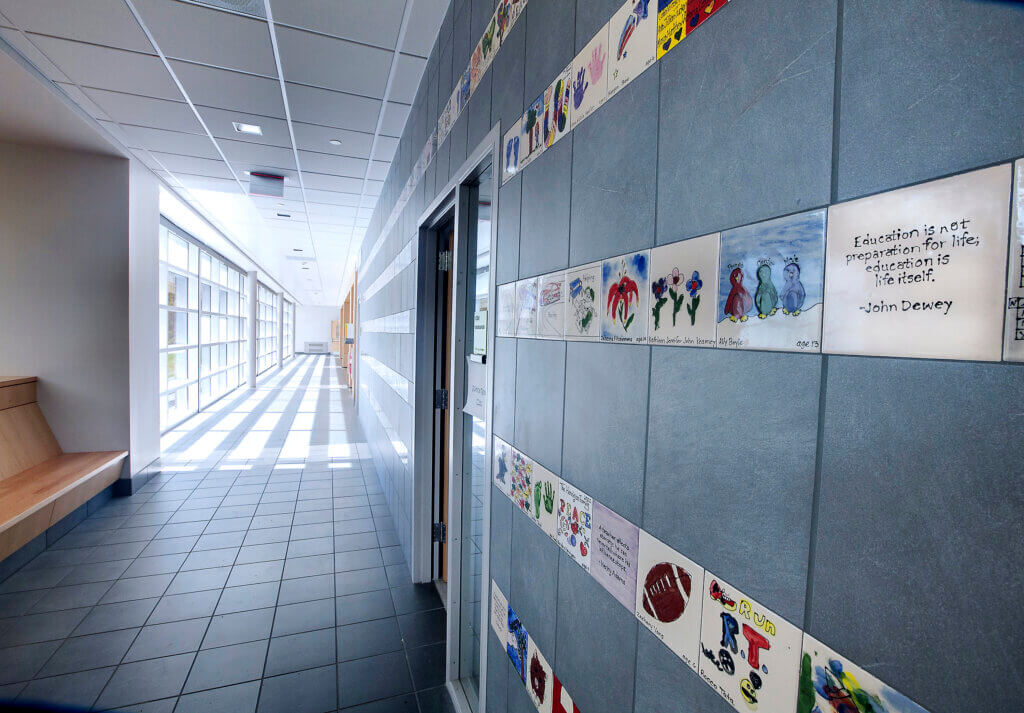
The design ensures many opportunities to promote creativity and innovation. This includes the student and community tile work, which was built into the main lobby.
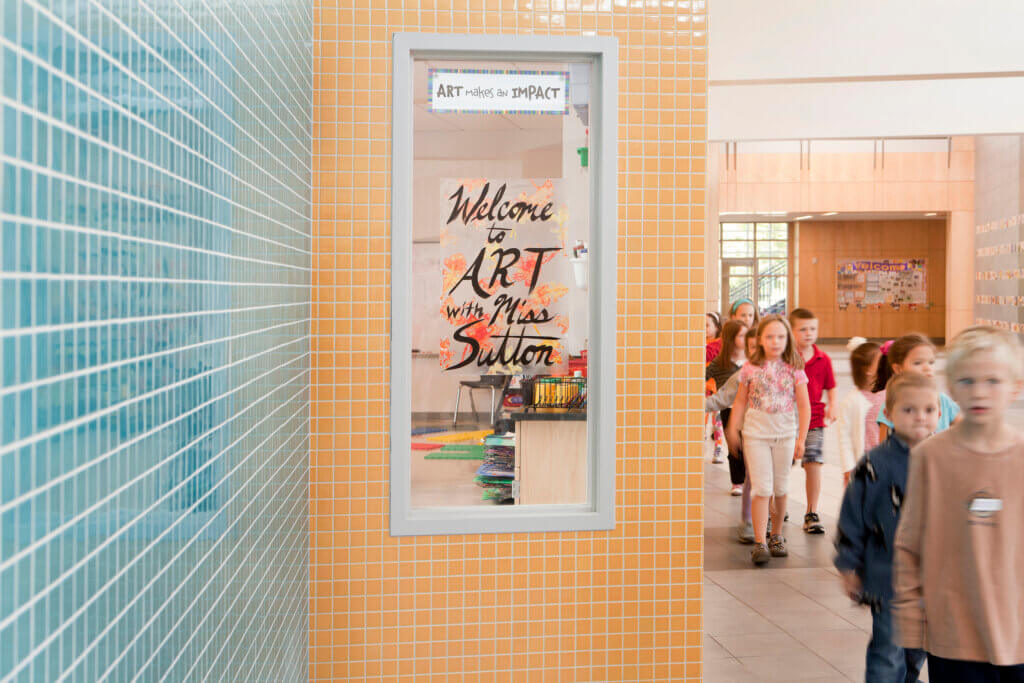
Geometric shapes cut into classroom doors, providing views into the art rooms and the media center, and the design of the outdoor classroom and play areas.
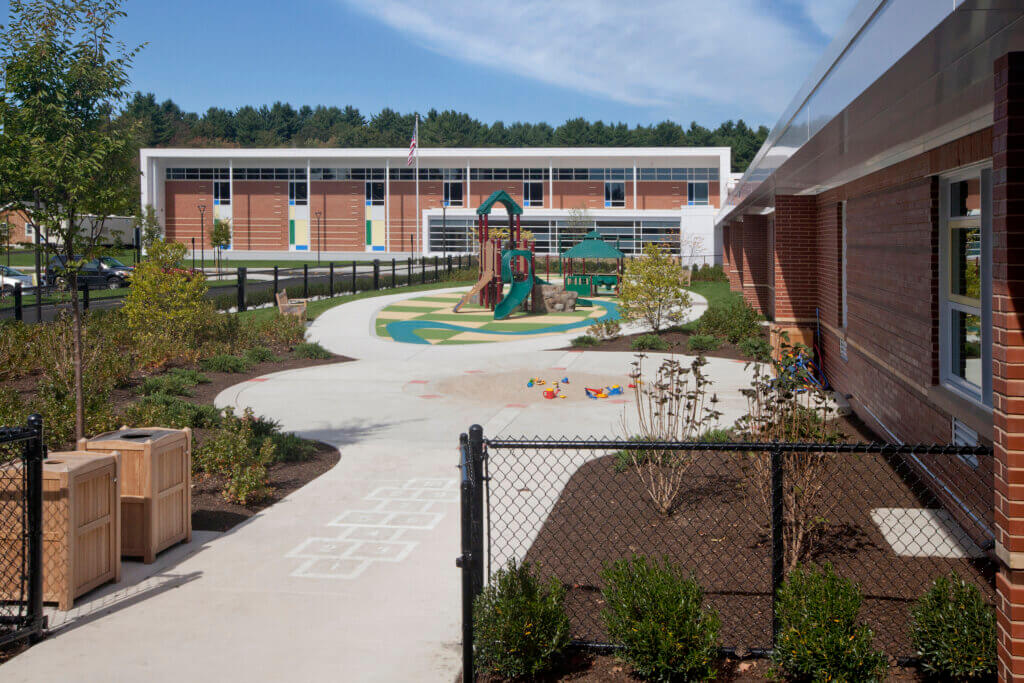
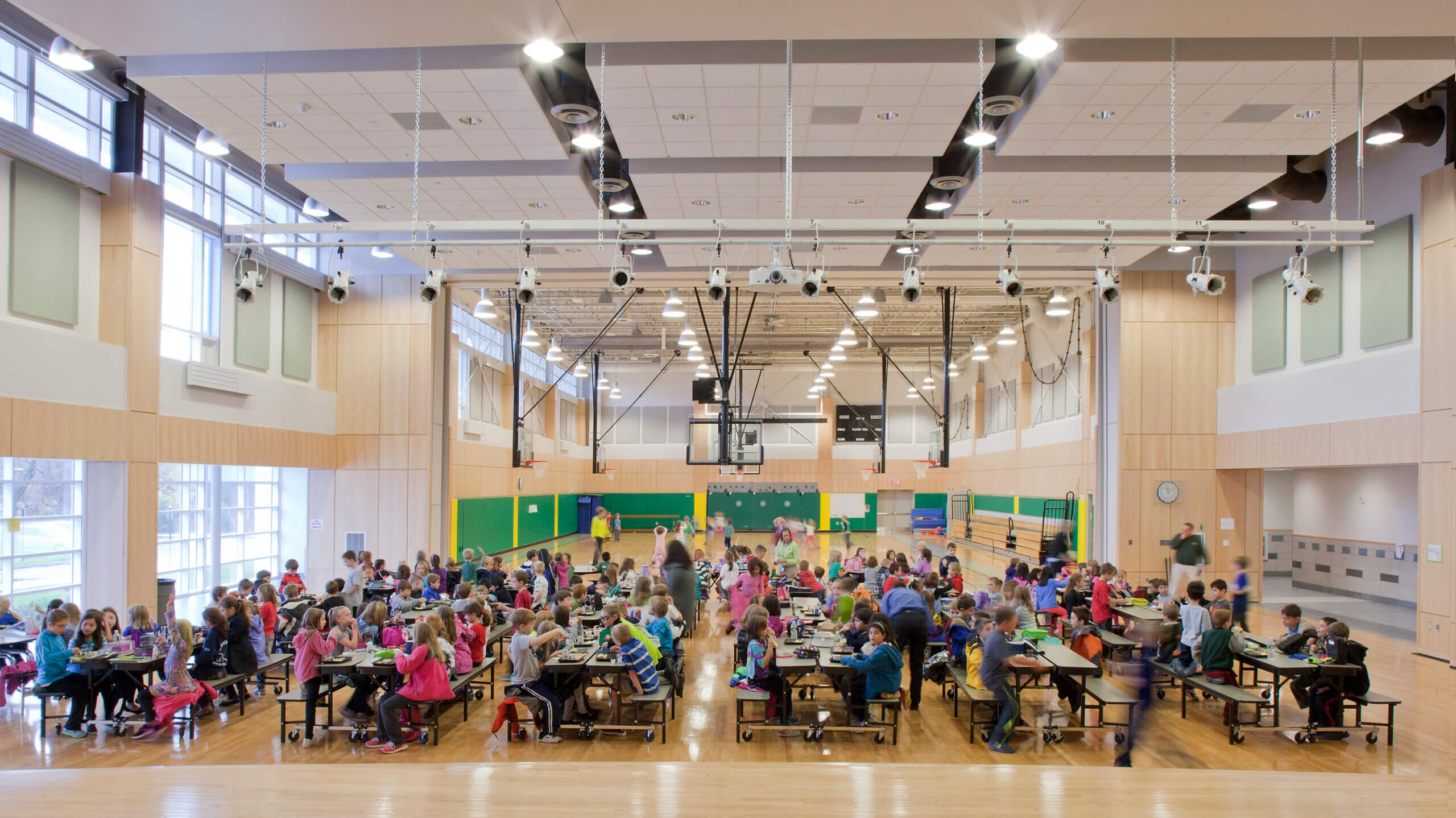

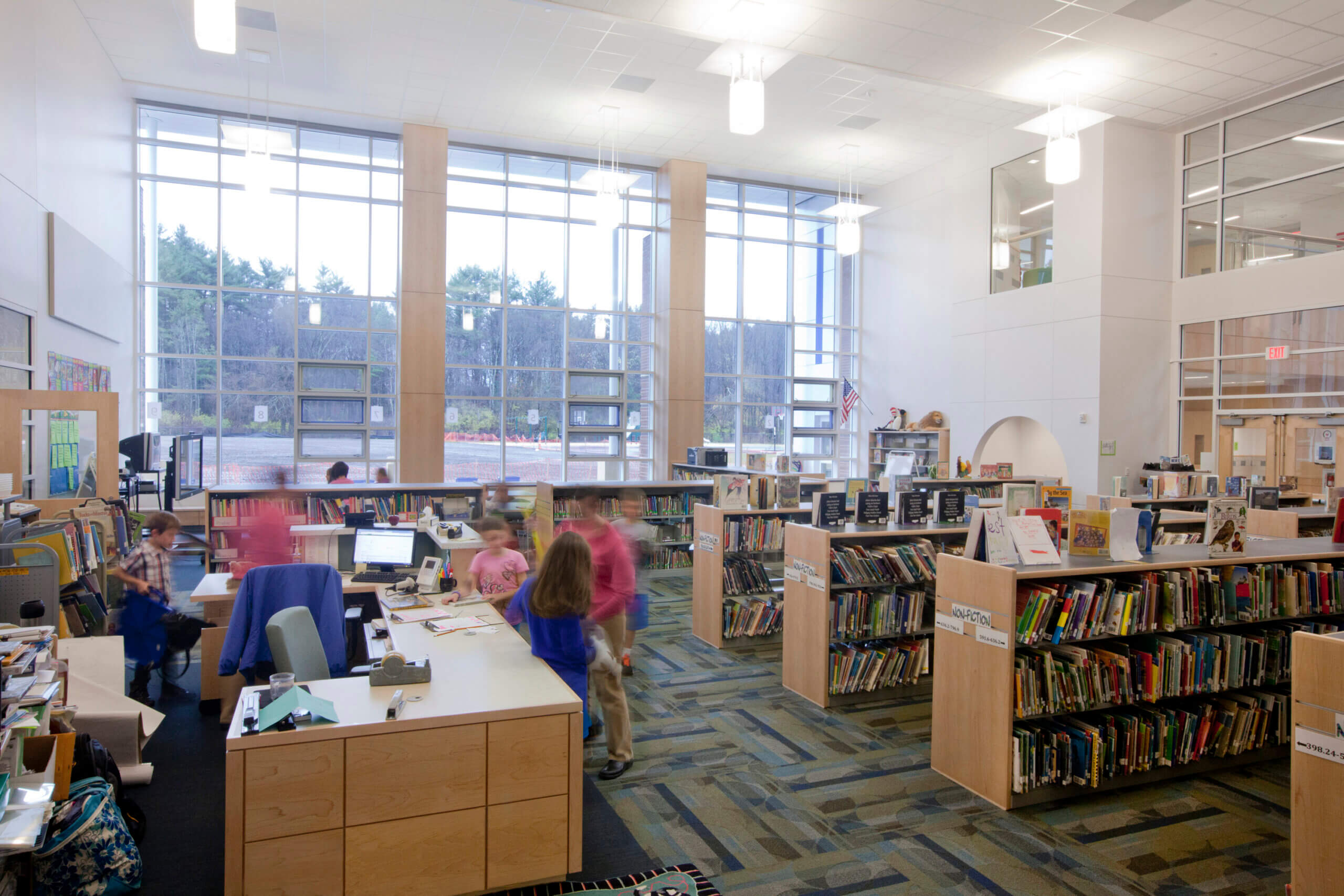

The media center nook provides an intimate space at reading time for younger students.
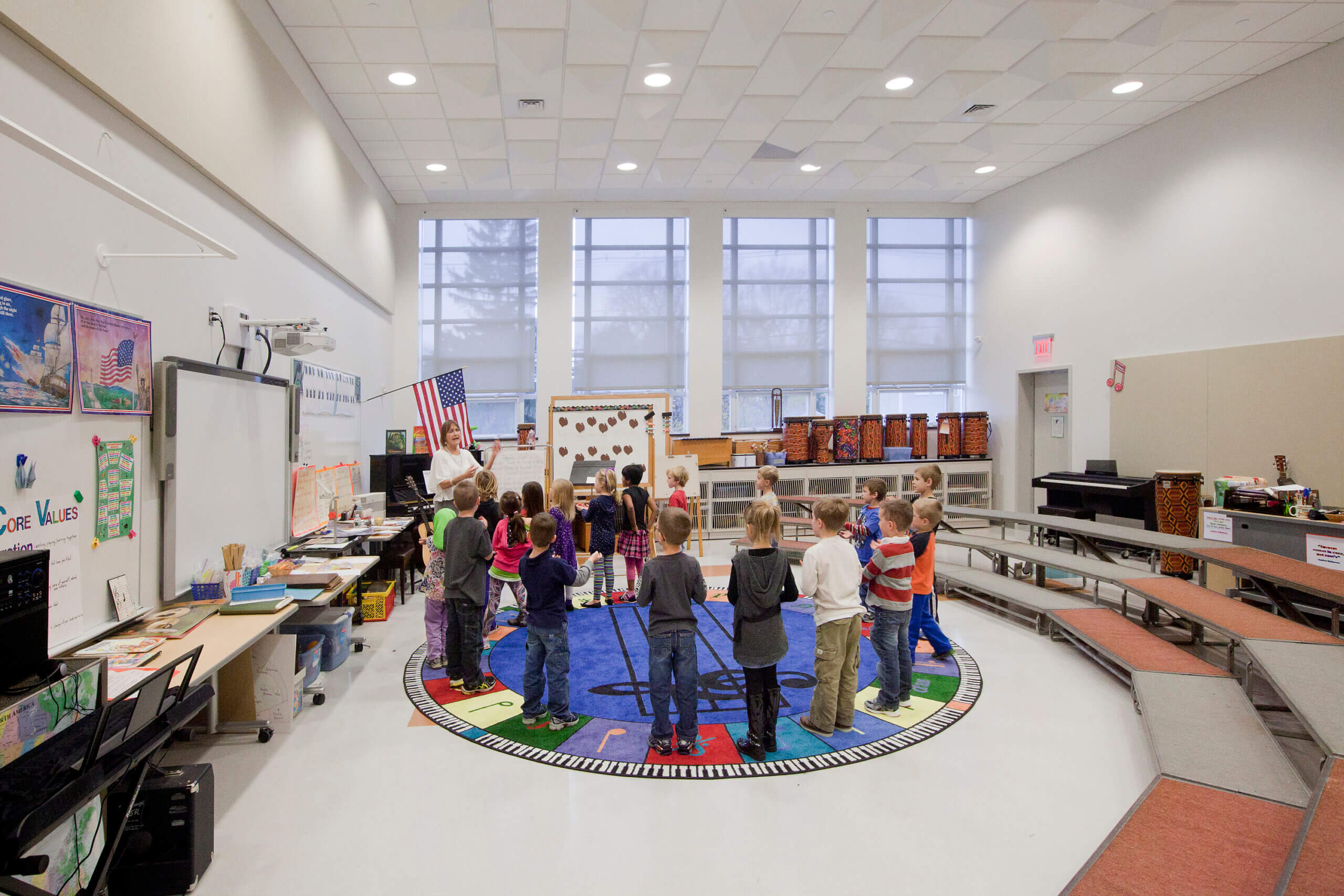
The school’s design reflects a new understanding of effective learning methods.
Innovative features include breakout spaces, L-shaped classrooms, numerous specialty learning spaces, widened corridors for teaching and learning, and an outdoor classroom. The breakout rooms are located between classrooms for each grade level, and can be accessed from each classroom, as well as the corridor.
